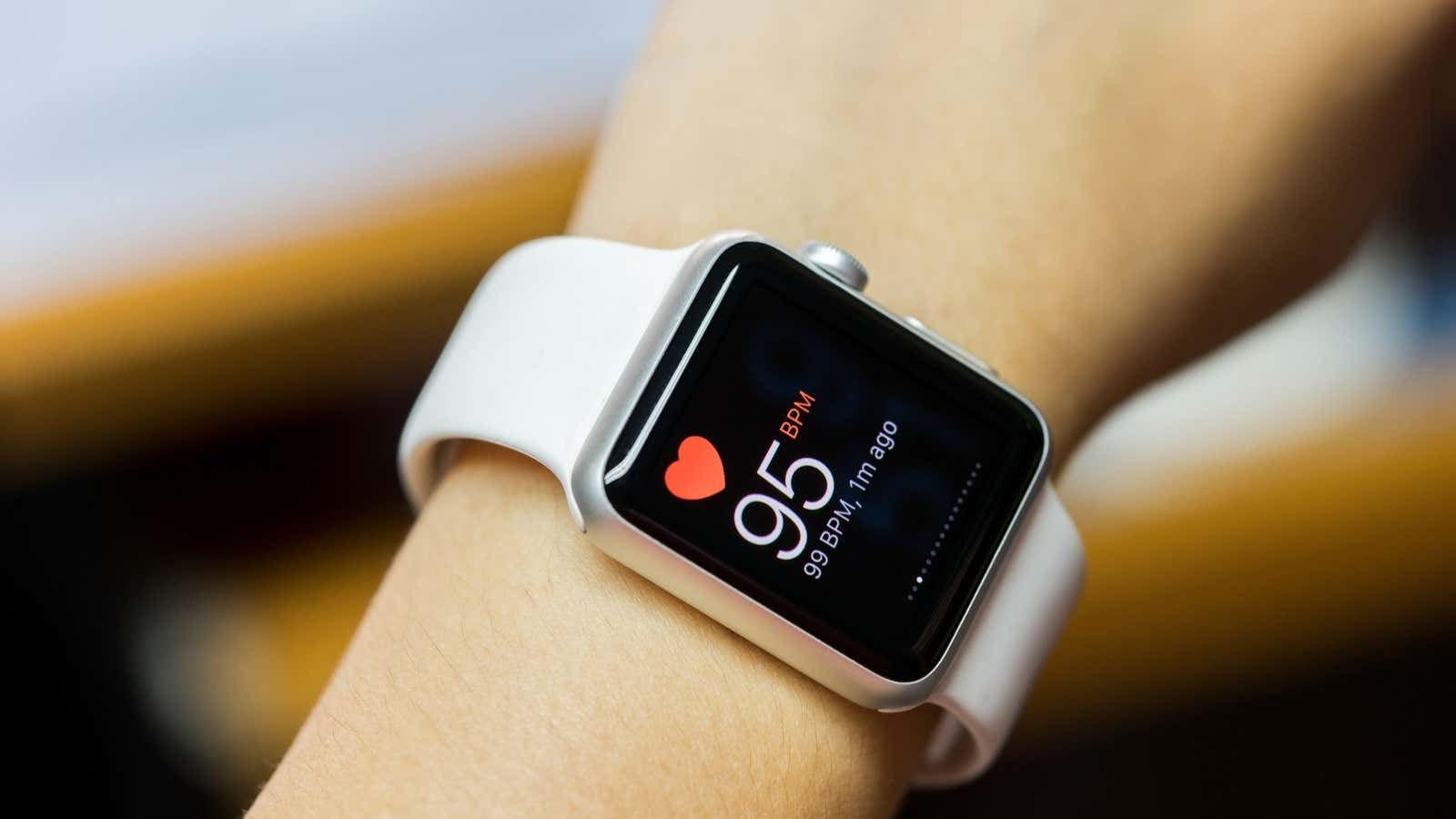What Your Heart Rate Variability Says About Your Health

One of the features offered by a number of fitness trackers is a metric called “heart rate variability,” or HRV, which is the time interval between each heartbeat. But given that we tend to think of our hearts beating at a steady and predictable pace, the fact that the interval between each beat changes can be difficult to understand.
However, because HRV is sensitive to stress – whether it be anxiety, lack of sleep, overtraining, or any of the many other factors of physical and mental stress – observing HRV can be a way to determine if your lifestyle needs to change altogether. For example, many professional and endurance athletes will monitor their HRV to assess how their overall stress levels might affect their performance.
“HRV is a very good indicator of the efficiency and performance of your cardiovascular system,” said John P. Higgins , M.D., a sports cardiologist at McGovern School of Medicine at UTHealth Houston. “High HRV means your heart is running like a Ferrari, which can go from 0-60 in 2.7 seconds.”
Heart rate variability is controlled by our autonomic nervous system.
Our HRV is controlled by our autonomic nervous system (ANS), which controls our fight or flight instinct and our response to relaxation. Depending on what happens in our life, whether it’s a bad dream, a stressful situation at work, or some exciting event, this will cause our brain to either stimulate or relax various bodily functions, including heart rate, breathing rate, etc. D. blood pressure and digestion. This also includes heart rate variability, which will either decrease when you have high stress levels or increase when your life is balanced.
Many factors affect your HRV, including how long you sleep, how nutritious your diet is, how much exercise your body needs, overtraining, and overall stress. … Low HRV is also associated with increased anxiety and depression and an increased risk of cardiovascular disease.
Heart rate variability can change depending on lifestyle.
The good news is that when it comes to your own HRV, these values can change depending on what’s going on in your life. As Higgins notes, our HRV usually fluctuates in a stable range for a period of several weeks to about a month and can change in a positive direction rather quickly. “Exercise is the best way to improve your heart rate variability, and it pays off in just two months,” Higgins said.
Observing your HRV can be a good way to assess if you need to reduce the stress levels in your life and if your stress reduction techniques are working. Given the enormous stress levels we’ve all been in over the past 18 months, stress reduction is probably the issue we all think about.
Knowing your heart rate variability can help you avoid overtraining
For people who train for something like a marathon or triathlon, observing your HRV can also help determine if you’re overtraining. As Higgins explains, your HRV will be lower after a hard workout. The sign that you are recovering from this workout is when your HRV is back to normal, which tells you that your body is ready to exercise again.
Thus, observing your HRV can help you figure out what level of training is best for your body. “High HRV is associated with improved functioning of the body system,” Higgins said. If your body is functioning normally, it usually leads to better athletic performance.